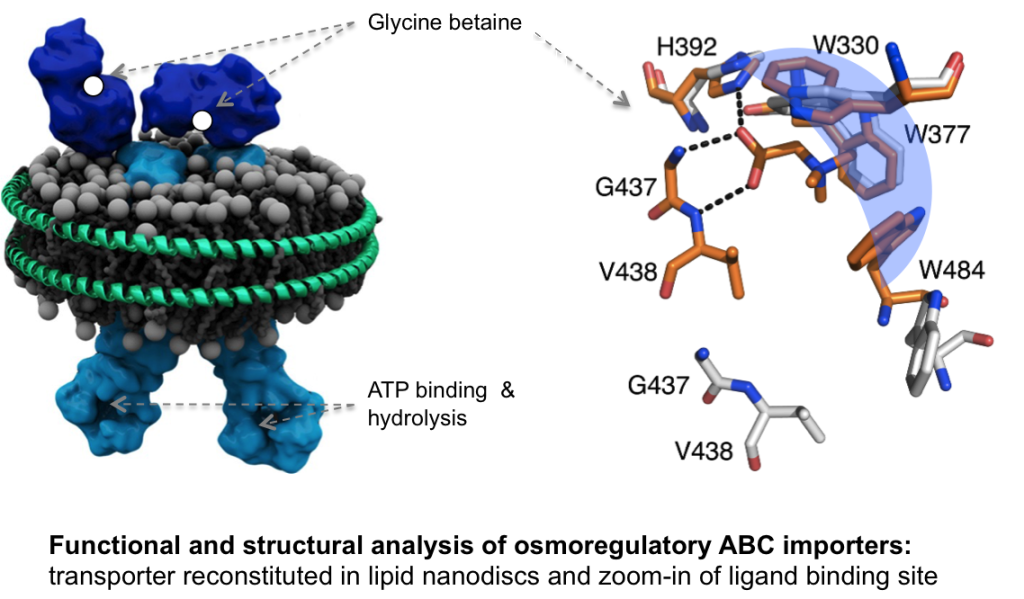Cell volume regulation and physicochemical conditions
Cell volume regulation is crucial for any living cell because changes in volume determine the metabolic activity through e.g. changes in ionic strength, pH, macromolecular crowding and membrane tension. These physical chemical parameters influence interaction rates and affinities of biomolecules, folding rates, and fold stabilities in vivo. Quantification of the physicochemical conditions of the cell, and understanding of the underlying volume regulatory mechanisms has immediate application in biotechnology and health, yet these factors are generally ignored in systems analyses of cellular functions.
Cell volume regulation and membrane transport
Osmoregulatory transporters for compatible solutes are crucial for cell volume regulation. We study the gating and energetics of osmoregulatory ABC importers by single-molecule optical methods to probe protein conformational dynamics and functional assays of ligand binding and solute translocation. We employ microscopy-based methods to determine the dynamics and interactions of (macro)molecules in cells, and using these tools we aim to elucidate the intracellular traffic of proteins and architecture of the cell under e.g. osmotic stress conditions.
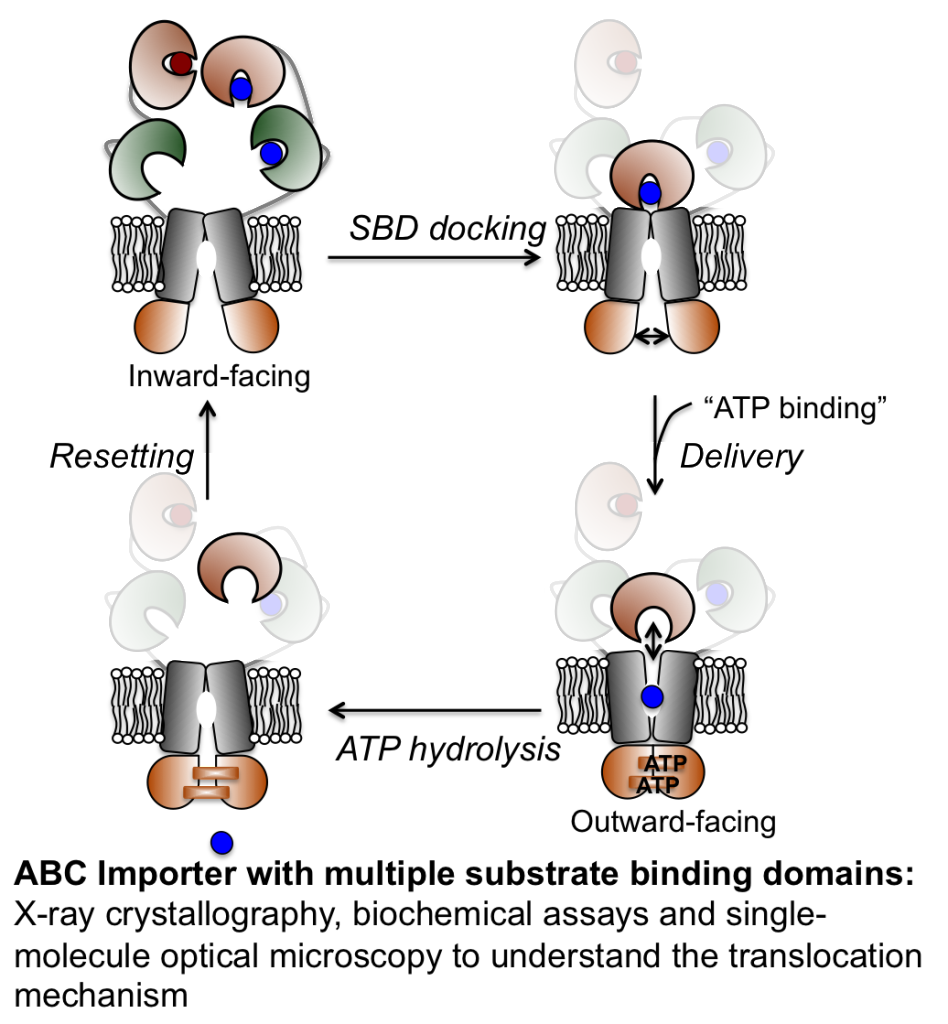
Biogenesis and engineering of membrane transport
Saccharomyces cerevisiae is the paradigm for fundamental research in lower eukaryotes and often exemplary for studies in higher eukaryotes. We implement state-of-the-art technology in optical microscopy (super-resolution optical microscopy, single-molecule tracking) to determine the traffic and membrane portioning of transport proteins in yeast. We use membrane reconstitution and protein crystallography to determine the molecular mechanism of amino acid transport, and we engineer the energetics and translocation of the proteins to improve the productivity of the organism.
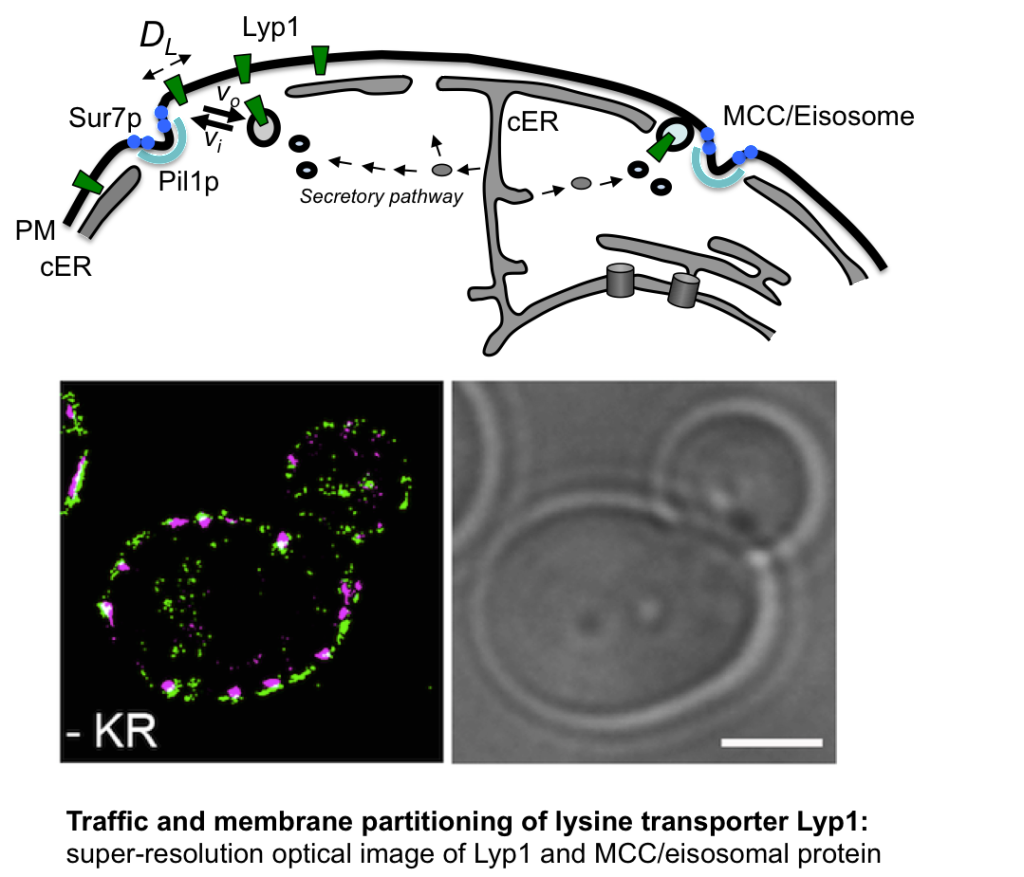
Biomimetic membrane systems: towards synthetic cells
Complex networks of proteins, nucleic acids and small molecules sustain the essential processes of energy provision, gene expression and cell division that characterize living cells. We use state-of-the-art membrane reconstitution technology to form lipid vesicles with a pathway for ATP production and suitable for sustaining long-term transport and biochemical conversions. We also develop vesicle-based delivery systems with hybrid membrane components. With colleagues of the Zernike Institute we use DNA-functionalized lipids and peptides to create vesicle systems to control bilayer fusion, cargo release and information transfer across the membrane.
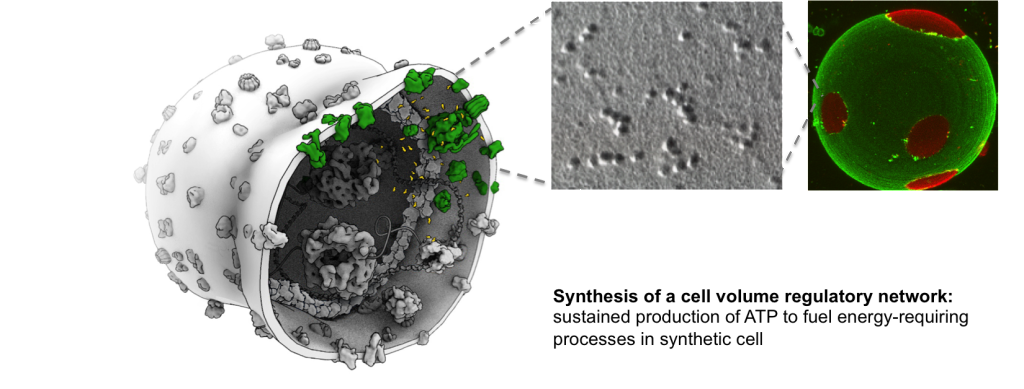
Aspartate (Glutamate) transport across the membrane
Glutamate transporters are secondary transporters found in many eukaryotes, bacteria and archaea. In prokaryotes these transporters mediate the uptake of nutrients, whereas in mammals, where glutamate is a major excitatory neurotransmitter, they catalyze the neurotransmitter reuptake into neurons and glial cells that follows synaptic signal transduction. Maintaining a low extracellular concentration of the neurotransmitter is essential for sensitive signal transmission and for the prevention of neurotoxicity. The transporters couple the uptake of glutamate to the symport of cations: three sodium ions and one proton. We use the archaean aspartate transporters as the model structures for mammalian glutamate transporters. We are interested both in the structural elucidation of different states of these transporters (by means of X-ray crystallography) and also in their dynamics, which we study with EPR and single molecule FRET.
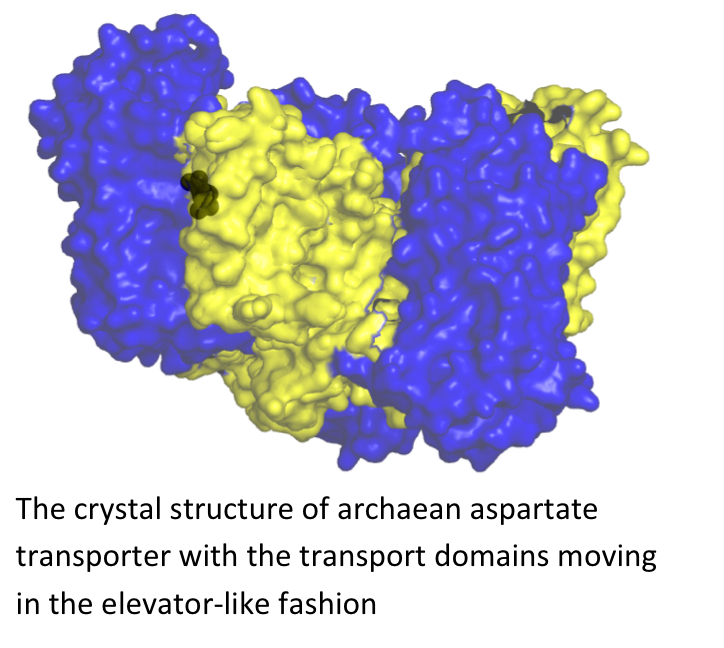
The novel player in the team – ECF transporters in ABC superfamily
Energy-coupling factor (ECF) transporters belong to the ATP-binding cassette (ABC)-transporter family and mediate the uptake of essential micronutrients in many prokaryotic species. ECF transporters are present in approximately 50% of prokaryotic species, and that they catalyse the cellular uptake of a range of micronutrients, including water-soluble vitamins (such as riboflavin and thiamin) and their precursors, as well as transition metal ions. We are studying these transporters by combination of biochemical, biophysical and crystallography tools to unravel their transport mechanism.
Vitamin transport in bacteria
Pnuc transporters catalyze cellular uptake of the NAD+ precursor nicotinamide riboside (vitamin B3) and belong to a large superfamily that includes the Sweet sugar transporters. The latter use a facilitated-diffusion mechanism to catalyze low-affinity sugar transport and are particularly abundant in plants, in which they allow, for instance, nectar secretion. In humans, the SWEET transporter might represent the elusive glucose transporter of the basolateral membrane of enterocytes in the intestine. PnuCs also use a facilitated-diffusion mechanism but linked to metabolic trapping in the bacterial cytoplasm by the specific kinase NadR, which converts NR into nicotinamide mononucleotide (NMN) and NAD+. Recently we have solved the crystal structure of PnuC from Neisseria mucosa, which adopts a highly symmetrical fold with 3 + 1 + 3 membrane topology not previously observed in any protein. Currently we are also investigating other transporters responsible for the vitamin uptake in bacteria.


